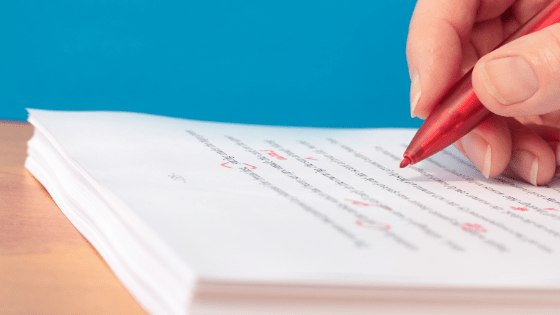I took a break from my manuscript and now I’m ready to dive back in for what I’m hoping will be the fourth and final round of edits. If you read my last blog post you know I had some feedback from my editor, so I sat with that for awhile and then made an appointment to speak with my editor about a plan.
We talked about being methodical with the draft so I don’t miss anything – because I’m serious, I’m ready for this book to be out in the world – and really going as slow as I need to accomplish that goal. We also came up with some really good guidelines that I think will help other writers.
Read and create a Reverse Outline
And while you read, take notes – lots and lots of notes. I plan on doing this right in the Word doc I sent to my editor and making my notes and comments in a different color than her notes so I can see them both. As I’m reading I will create a Reverse Outline – which is my editor’s favorite thing – and for good reason, it helps you see all the big problems right away. A reverse outline is simply an outline you make after you’ve written your book – instead of mapping out where you want to go, it helps you see where you’ve been (or where you haven’t been).
Once I’ve read through my book, read through all of her notes and made all of mine, and created a new reverse outline – it will be time for the next step.
Priority Checklist
Since a lot of my editor’s notes were about things that I need to fix book-wide, I’m going to make a checklist of all of those things and look over them while I’m editing. Things like – are we in a white room or is there description? Do my characters sound the same or different? Is everyone mad or angry or is there variety? Having one checklist to look over will keep me organized and on track to fixing those book-wide issues that I seem to be having this round. I call it my priority checklist because these are things that NEED TO BE FIXED!! Like major attention needs to be paid.
Planning
Now comes the somewhat fun part, planning my writing sessions. I will look at my calendar and my digital planner and I will start working out how much time I’m going to have each week for editing. 2-3 sessions a week is usually my average with some weekend times thrown in there. And I usually average one chapter per session so I can plan on having 30-35 days of work to get everything done. OK!
Side tip! Get yourself a reward system — use stickers for each day you do your writing and after so many stickers give yourself a treat – either a day off, or a fancy coffee, or time with YouTube. Make this part fun!
Start working and writing
Once I have my notes, my general checklist, and my plan it’s time to actually start. I will open up the Word Doc and my Scrivener file and get to work – little by little, fixing each chapter. I read through the notes from me and my editor and fix those first. Then I’ll go through the checklist and make any and all changes to make sure my chapters are near perfect. I’m hoping I can get one chapter done per editing session but some chapters might need more sessions so I can adjust as I go. Try to remain flexible with your own plan – things happen.
Final read through
Since I would like this to be my last major edit, I will do a final read through at the end and run a spell check to catch any glaring errors before sending it back to my editor. Whew! That was a lot of steps, but when you want to do something right you need to buckle down and do the work, right? Right!
Have you ever edited a major project? A book, or large term paper perhaps? What were your steps? What are you still curious about in terms of editing? Let me know in the comments below or email me and I’ll get back to you with my answers.
